This is part one of a three-part story about Fortress, the canceled Final Fantasy XII spin-off in development with now-defunct studio Grin in the late 2000s. Be sure to read part two, which includes a complete look at the game's storyboard and a rundown of its narrative, as well as check out our exclusive gallery of never-before-seen artwork.
On August 12, 2009, Swedish game developer Grin filed for bankruptcy and closed its doors. After a little more than six months of work on its latest project, founders Bo and Ulf Andersson announced that, due to an "unbearable cashflow situation," the company was ending its 12-year run.
In a final farewell posted to Grin's website, the Anderssons mentioned "an unreleased masterpiece" they could not finish. One week later, a former employee outed the project, referencing an "unreleased Final Fantasy project" on his LinkedIn profile.
Final Fantasy is owned by and developed under Square Enix, and it has always been produced in Japan. No Final Fantasy game has been developed outside of Square Enix's ring of Japanese studios and affiliates. Even most Final Fantasy spin-off mobile games have been developed internally or in collaboration with other Japan-based studios. It was unheard of for the company to lend its crown jewel property to a Western studio.
In the months following Grin's closure, details began to leak about this Western-developed Final Fantasy. It would have been a second spin-off to Final Fantasy XII, the first being the 2007 DS title Revenant Wings by small Japanese developer Think & Feel. Grin's game was codenamed "Fortress" and was an action role-playing game with events centered on the titular structure. Some outlets reported on sources claiming Fortress began its life as an entirely different game, only becoming a Final Fantasy title after Square Enix's involvement, and that it was a lack of funding from the publisher that caused Grin to cancel the project and shut its doors.
But how did all of that happen, and what could have been if Fortress had succeeded in becoming the first Western-developed Final Fantasy title?

In the second half of 2008, Square Enix paid a visit to Grin, which was one year into development on action platformer Bionic Commando Rearmed, a sequel to the 1988 NES title of the same name. According to Ulf Andersson, who spoke with GameSpot at length about Grin, Bionic Commando was in fair shape when Square decided to drop by, and the game impressed the touring company.
From this visit, Square invited Grin to pitch a game based on one of its existing IPs, an obscure card game by the name of Lords of Vermilion. It is unknown whether other studios received the same invitation pitch as well. Ulf Andersson was tasked with writing the pitch, and after sending it along to Square Enix, was invited to present his ideas in person. Prepared to run down his pitch for Square Enix's IP in front of the company's board of directors, he was surprised when Square Enix revealed it had other plans for Grin instead.

Square Enix was going to give Andersson and his team Final Fantasy. But not just any Final Fantasy; Grin would be tasked with making a spin-off for Final Fantasy XII.
It's not hard to imagine why Square wanted another Final Fantasy XII title. The game shipped 5.2 million copies worldwide in the year after its March 2006 release, with more than 1.7 million copies shipped in Japan during its launch week alone. It garnered near-unanimous critical acclaim in the West as well, with critics praising its combat and story in particular. Its sequel, Revenant Wings on DS, broke one million units sold just over one year following its release.
When Square Enix had contacted Grin, Final Fantasy was already beloved worldwide, but other high-grossing series such as Dragon Quest still couldn't find footing in the West. Square seemed interested in seeing if a Western studio's take on one of its core franchises could be the key to unlocking unanimous international success.
"It was a test," Andersson told me. "Square’s problem at the time was trying to understand the Western market. They wanted to see how we did."
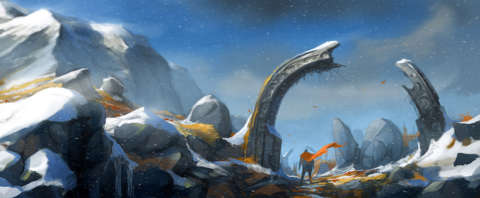
In early 2009, Grin's Final Fantasy began to take shape. The project, codenamed Fortress, would have been an action RPG with a distinctly Scandinavian art style. The developer invented an entirely new area of Ivalice, the world in which Final Fantasy XII, Final Fantasy Tactics, and their sequels and spin-offs including Vagrant Story, were set. Buildings and characters would have an ancient Viking-esque aesthetic, while landscapes would feature a variety of exotic environments. Players would walk through grassy green meadows in the shadow of rocky crags; chilly snow-laden, wind-whipped mountain peaks; and dusty brown deserts. The game would be groundbreaking for the studio, whose pedigree included mostly PC shooters and racing games such as Ballistics and Tom Clancy's Ghost Recon Advanced Warfighter 1 and 2.
One source, another former Grin employee, described the game to me as strictly following Nordic aesthetics, with deep, dark forests reminiscent of fantasy illustrator John Bauer's works, along with inhabitants resembling fantasy ideals of Vikings.
Several sources previously connected to Grin, all of whom asked to not be named, claimed that Fortress did not begin its life as a Final Fantasy game. Andersson said that the idea of a game that took place entirely in one location was on his development bucket list, and he used this idea as a springboard for his pitch to Square Enix. Grin was excited to take on Final Fantasy--up until that time, no Western studio, not even Square Enix's international subsidiaries, had made its own game in the classic JRPG series.
"We didn’t want to reinvent or remake too much of [Final Fantasy XII], but create a fresh piece," Andersson said. “If we were to make a straight Final Fantasy, I don’t see the point in us making it. It would be better if Square just kept on making those themselves.”

According to several people connected to the matter, a few months into production in spring 2009, a mandate came down from Square Enix that the art style of Fortress had to be completely altered. The Nordic aesthetic was to be changed, and more obvious Final Fantasy influences had to be implemented. Fortress wasn't set in a representation of Ivalice that players were familiar with; and yet, that was Grin's idea, to make a whole new part of Ivalice for players to discover.
Several sources said that the design overhaul required to do this was so "massive" that it significantly disrupted development. Most assets had to be redone and whole environments were scrapped.
The team working on Fortress soon ballooned as Grin shuffled its ranks, assigning more developers to the Fortress project. At this time most of the studio was dedicated to Fortress, with only a handful of designers working on other projects. According to Andersson, Grin was, at this time, completely reliant on Fortress and the money coming from Square Enix. There were no other big projects in the pipeline, and no other funding. In 2009 alone, the company released three poorly-reviewed action games--Bionic Commando, Wanted: Weapons of Fate, and Terminator Salvation.
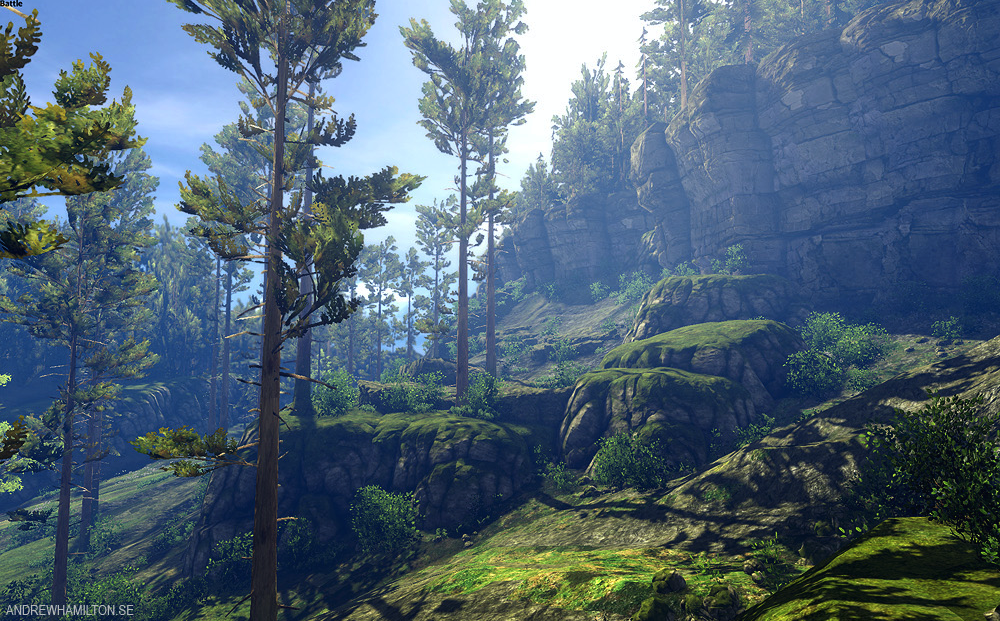
Spring became summer, and according to some sources, all Grin heard was positive feedback on the project. But the Nordic art style, which the team did not want to totally scrap, was still not well received by the publisher. It wasn't Final Fantasy XII enough, they were told; it didn't look like Ivalice. But Grin continued to work on the title, dedicated to creating something fresh and new, something they thought Final Fantasy fans would love.
The Nordic aesthetic continued to be a problem for Square Enix. Grin maintained it could pull it off by making it a new region of Ivalice. The developer thought the potential brought on by a Nordic part of Ivalice was intriguing, and it tried desperately to make the aesthetic work within the universe. Grin argued that the concept could work because other parts of Ivalice were already based on real-world Middle Eastern countries and cultures, like Egypt and Syria.
According to Andersson, Grin would communicate with Square Enix's headquarters through its London office, sending all content through the European branch for review. There were problems with this communication he said, and wires were often crossed or answers wouldn't come at all.

"I don’t believe in blaming people, but there was a broken process between the UK office of Square Enix, which was merging with Eidos at the time, and it was a bit of a mess," he said. "We were working with them and they were supposed to communicate with the Japanese headquarters, which in my opinion I don’t think they did enough. So all this stuff they wanted to change we changed as much as we could or wanted to, but that drifted further and further away from what we agreed on making with the Japanese studio. So when the Japanese guys saw it, it was completely different, because they weren’t as much a part of the dev process as they should have been."
Some people associated with the project claimed that around several months into the project, Square Enix hadn't paid Grin what had been agreed upon for that time frame. The company laid off large numbers of staff from its Barcelona, Gothenburg, and Stockholm offices, before shuttering the former two altogether. Some said that at this time they had received no overwhelming negative feedback from their work on Fortress, but Square Enix was still not keen on the game's art direction.
"We did some combat stuff that was okay in the beginning and got feedback from Square UK and had to change it, but we never got to the point where it was fun," Andersson explained. "At the same time we spent two to three months on the gameplay stuff alone. We didn’t really get to develop it much, we did a bunch of story and concept for it, but really never got into any heavy development."
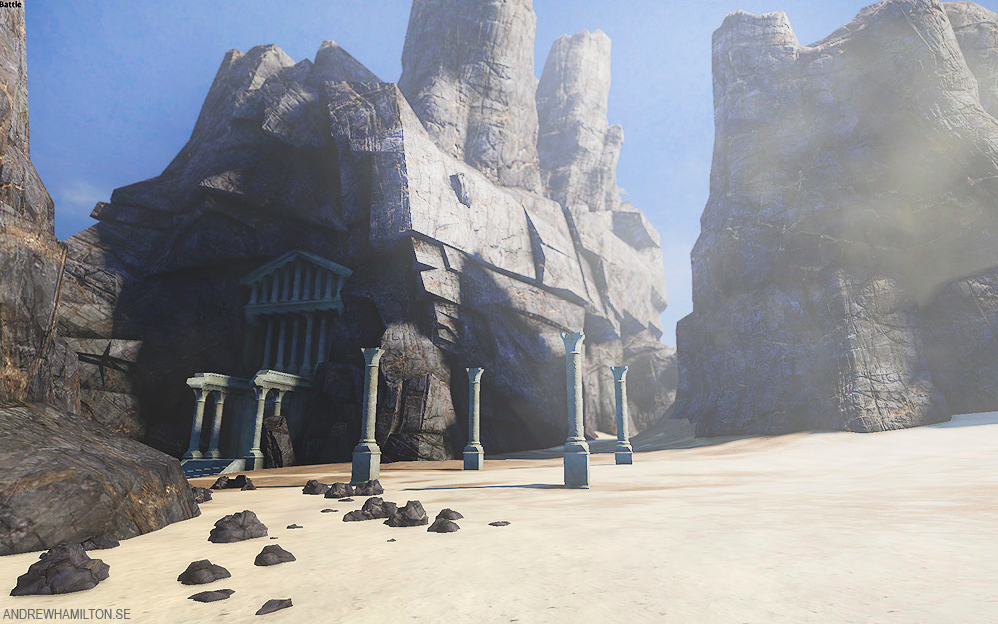
In August 2009, Square Enix told Grin it would no longer be funding the project and pulled support for Fortress. A week later, with no way to pay its employees, Grin filed for bankruptcy and closed the doors on its sole remaining Stockholm studio.
When reached for comment for this story, Bo Andersson--Grin's former co-founder and head alongside Ulf--did not want to discuss Grin or Fortress. But in speaking with Ulf Andersson, it appears that the story of Fortress' cancellation and Grin's closure is much more complicated than a disagreement over art style. Ulf Andersson said that it was probably a business move, suggesting that Square Enix examined the project's milestones, determined that Grin wouldn't be able to deliver, and decided that Square's investment would be lost.
"They didn't truly dump us over the art style," Andersson explained. "The concept guys, they were doing an awesome job. All the stuff they made was really, really cool. I think it’s a shame if they think that at any point they did a bad job. It's sad, because they did a great job, and I don’t think Square thought they did a bad job either.
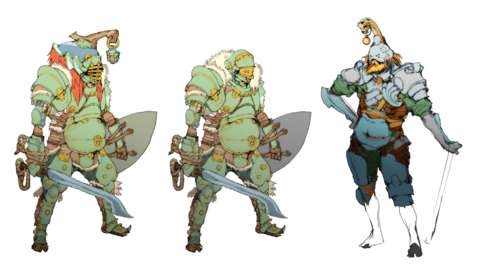
"I sat down with a guy [recently] and he had basically talked to someone high up at Square Enix--considering who the guy I am talking about is, it’s probably very true--and he said that the reason they canceled the project is because they were looking at the economics of our studio and said, okay, they only have our project, and they have three times the amount of people, and they aren’t going to survive on the money we gave them. If they don’t sign a new project, they will eat our project and go bankrupt, and we’ve spent tons of cash on Fortress. It’s better to quit early."
When asked about the cancellation of Fortress and the reasoning behind it, a representative from Square Enix declined to comment.
During our conversations, Andersson's tone was nothing but reverential towards Square Enix and his time working on a Final Fantasy game. He feels the accomplishments of the Fortress project outweigh the drama, and he spoke of his time working on the project and with Square Enix with no negativity. Games get canceled, he said. This one just happens to have gotten a lot of attention because it was attached to a widely beloved series.
"It’s not on Square, I would say it’s just how lawyers work. I don’t think Square is an evil company, I think they’re awesome, and in my mind, their reputation should stay intact. I don’t think they made something really bad, I think it’s just how business works. When you have to cancel something, it’s always going to be a bit nasty, and when you hand something over to lawyers it’ll be even nastier. I understand why they canceled. I would have done the same thing."

So what happened to Fortress after Grin closed its doors?
In the years since the closure, concept art has surfaced in the online portfolios of many former Grin designers. Composer Erik Thunberg released a track for Fortress, called "Crystal Theme," on his SoundCloud page. A tech demo for Fortress surfaced along with a curious image containing a summary for a game called Valiant Saga and referencing Final Fantasy XII directly, as well as several locations from the world of Ivalice. The logos for Square Enix and Eidos Montreal were stamped on the image, suggesting that Eidos was developing its own Final Fantasy XII spin-off.
According to the summary, Valiant Saga would take place 10 years after the events of Final Fantasy XII and center around the Fortress of Faram, a stronghold in the Ivalice country of Nabradia. The Queen of Dalmasca--Ashe--hires a "lone mercenary" to vacate the Fortress's resident, an evil cult leader who wants to use the structure's ancient magics to destroy Ivalice.
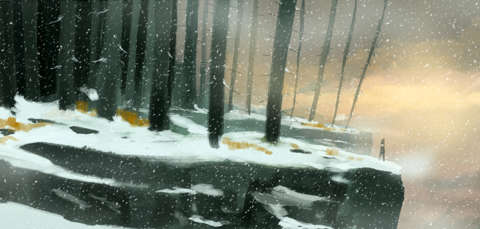
But at E3 2011, Square Enix director Motomu Toriyama told VideoGamer that Fortress "won't be released," adding that it was "suspended." Producer Yoshinori Kitase added that having a Western studio develop a Final Fantasy game was also very much off the table, saying, "Quite honestly, we can't really see it happening."
As of today, no Western games studio has finished a Final Fantasy project. In 2013, Square Enix designer Yuji Abe told OXM that a Western studio could one day steward the Final Fantasy franchise, though to date no more has been said on the subject.
"Obviously, Square Enix bought out Eidos a number of years ago, and now we have direct access to American development teams," Abe said at the time. "That's certainly been discussed within the company, the possibility of say, Eidos or maybe someone else to look after or maybe take on the Final Fantasy series."
An Eidos Montreal spokesperson denied that the studio had ever worked on Fortress; it seems that the project died with Grin. Andersson, however, sees the game everywhere--specifically in games former Grin developers have lent their talents to.
"I do know that parts of it has seeped into other projects, because everybody from Grin is working on other games," he said. "I can see certain patterns in art, or people tell me they took it from Fortress. It still sort of lives to this day.”
Artwork above taken from the online portfolios of Andrew Hamilton, Bjorn Albihn, Joakim Hellstedt, Martin Bergquist, Peter Johansson, and Tomislav Spajic.

